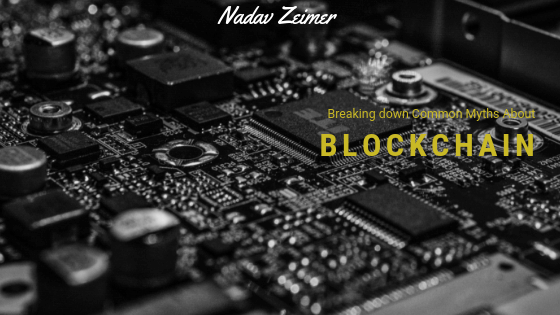Blockchain can be used to address voter fraud, manage supply chain, level the music industry, and track the life of a turkey. Or, maybe not. As with any new and exciting technology that comes out, it’s easy to get caught up in all of the amazing potential it holds. But, often that excitement clouds the actual applications of the technology, resulting in myths about the power it holds. Blockchain has been no exception to the rule. Here are four of the most common myths surrounding the digitalized ledger, and the fact behind them.
Blockchain will change the world
Blockchain can be used for a variety of technical and complex transactions, like verifying a person’s identity, and does eliminate the risk of tampering with the ledger. However, it’s not immune to fraud and doesn’t remove the threat of online security, meaning it won’t be able to be used for a variety of functions. Also, just because it’s a new and revolutionary technology, doesn’t mean it’s the most efficient option out there. For most uses, sticking to a traditional centralized cloud database system is still the best option.
Blockchain can be used for everything
Every article written by a blockchain enthusiast shares the millions of applications of blockchain. While the technology isn’t limited to just the world of finance, that doesn’t mean it has infinite uses. It likely will not replace lawyers or money any time in the near future. It has useful applications for many industries, but that doesn’t mean it will completely upend those industries.
Blockchain can never be hacked
The supposed security and inability to edit records is one of the main selling points of blockchain. However, this isn’t exactly true. While blockchain can catch unauthorized changes to data, it is still susceptible to hackers. 99% of current blockchain projects are so small that they are essentially centralized and thus extremely vulnerable. Bitcoin may be unique in it’s actual, current security and given network effects are most likely to settle in as a reliable platform of reliable account balances. Many other projects are scams or just not meant to generate income as much as just serve a purpose like all the IOT. Funny story – the bitcoin blockchain has improved over time. The original type of wallet was susceptible to attack by a quantum computer. The wallet of the famously mysterious founder Satoshi Nakamoto has never been upgraded. So it is still susceptible to the first quantum processor to operate at general temperature and atmospheric conditions. They call this the quantum alarm since it is worth several billions of dollars today. Soon after the first quantum computers come into existence that wallet will be emptied, putting the world on notice that any nonquantum compliant hash function will be totally useless for ensuring security.
Blockchain is free
With all of the talk about how accessible blockchain is, it’s easy to fall under the assumption that the technology is free. However, that isn’t the case. The technology is neither free nor even cheap. Running blockchain requires using multiple computers solving mathematical algorithms to come to the single version of the truth (SVOT). Each individual block in the blockchain requires a large amount of computing power to solve — the amount of energy needed to power these computers can be costly. It is the tradeoff to minimizing security vulnerability – it would just cost too much to hack the system and one would have to invest so much money into the very money that your hack would destroy. There is an inherent conflict of interest beyond the financial barrier linked to the cost of energy consumption.

